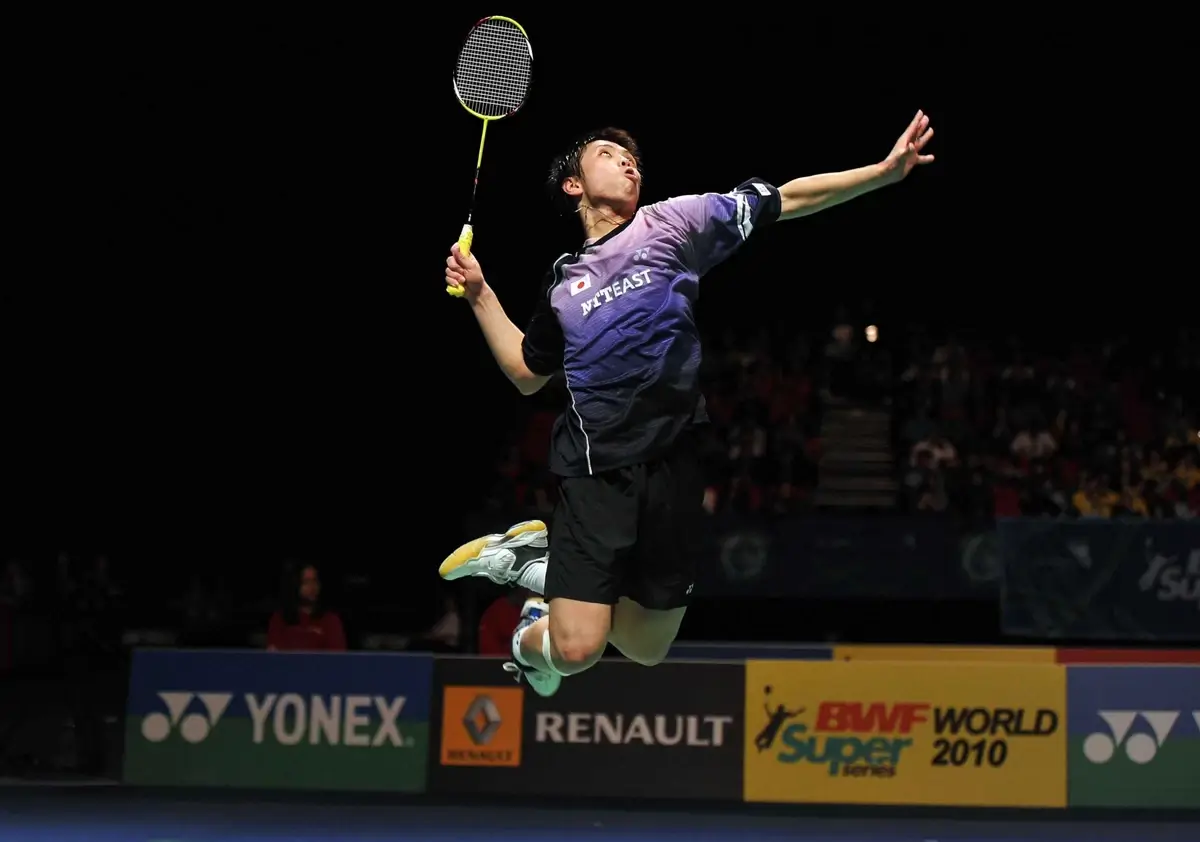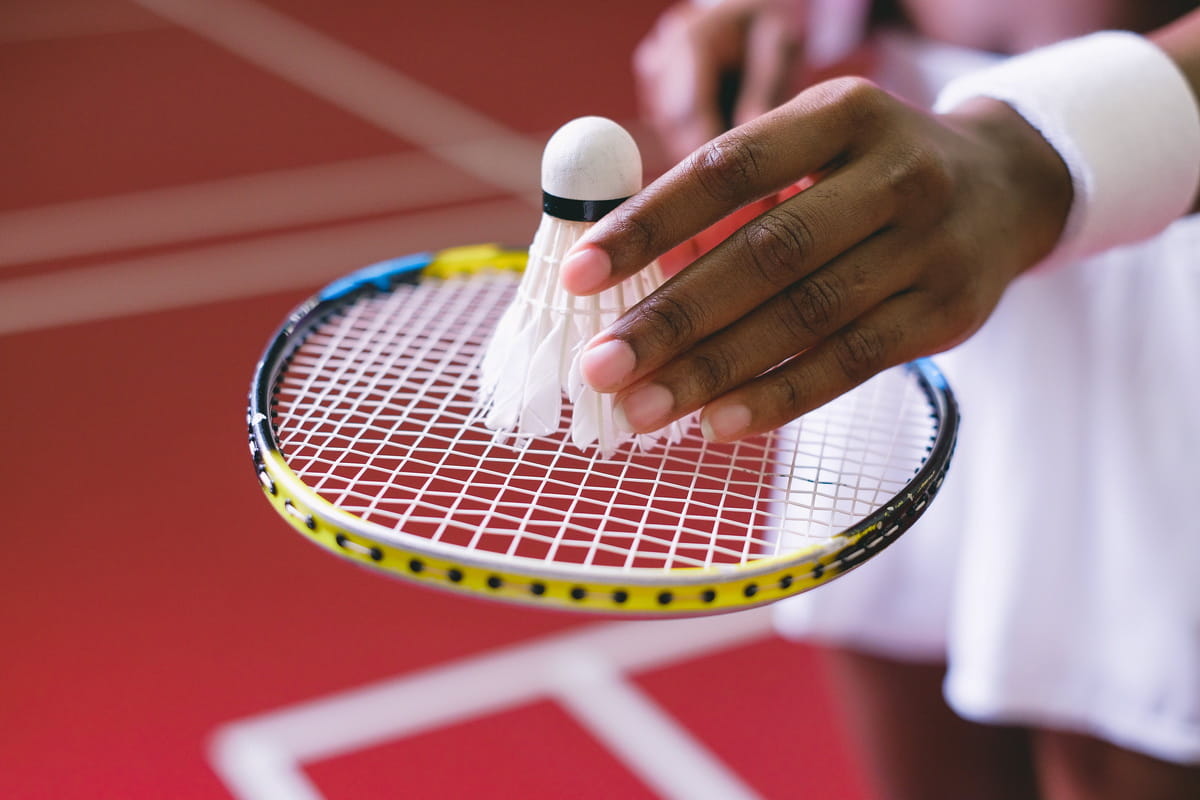Badminton, a sport with a remarkable history dating back over two millennia, is known for its lightning-fast gameplay and international acclaim. Recognized as the fastest racket sport, with shuttlecocks capable of reaching speeds over 200 mph, badminton combines ancient traditions with modern competitive spirit.
This article uncovers 20 intriguing facts about badminton, from its early origins to its status as an Olympic sport, highlighting its evolution, technical nuances, and global impact.
1. The Birth of Badminton: A Game with Ancient Roots
Badminton’s inception can be traced back to ancient games played in Greece, China, and India over 2000 years ago. These games eventually evolved into battledore and shuttlecock in Europe, particularly popular in the 17th century.
The modern version of badminton was developed in the mid-19th century in British India and was introduced to England by returning officers. The sport was first played under its current rules in Gloucestershire, England, at Badminton House around 1860. This version combined elements of the various ancestral games, standardizing them into the sport we know today.

Image: franpritchett.com
2. Speed Thrills: The Fastest Racket Sport in the World
Badminton is officially the world’s fastest racket sport. A 2013 study by scientists in Japan recorded the speed of a badminton shuttlecock at 493 km/h (306 mph), significantly faster than the top speeds in tennis. This speed is attributed to the unique aerodynamic properties of the feathered shuttlecock, which is designed to be lightweight and yet incredibly fast.
The feathers used in the shuttlecock come from the left wing of a goose, chosen for their particular angle and resistance, which contribute to the shuttlecock’s high velocity and distinctive flight pattern.
3. Badminton in the Olympics: A Journey of Recognition
Badminton made its Olympic debut in the 1992 Barcelona Olympics, after being a demonstration sport in the 1972 Munich Olympics. Since its inclusion, it has become one of the most watched sports in the Olympics, drawing significant global viewership.
The Olympic competitions have been dominated by players from China, Indonesia, and Denmark, highlighting the sport’s popularity in Asia and Europe. China’s legendary player Lin Dan, known as “Super Dan,” is one of the most celebrated Olympians in badminton, having won gold medals in 2008 and 2012.
4. The Feathered Shuttlecock: Unique and Precision-Engineered
The design of the badminton shuttlecock is a feat of precision engineering. Each shuttlecock is made from 16 feathers, usually from the left wing of a goose or a duck, and weighs about 4.74 to 5.50 grams. The feathers are arranged in a cone shape and glued to a cork base, providing stability and optimal aerodynamics. This design allows the shuttlecock to decelerate faster than any other projectile in sports, making the game of badminton unique in its playing dynamics.
The manufacturing process is highly meticulous, with each feather being selected and positioned to ensure the highest quality and performance standards.

Amit Rai / Pexels
5. Global Appeal: Badminton’s Popularity Across Continents
Badminton is a sport with a truly global reach. It is especially popular in Asia, with countries like China, Indonesia, and Malaysia leading in international competitions. The Badminton World Federation (BWF), established in 1934, has over 194 member nations. The
Thomas Cup, first held in 1948, and the Uber Cup, started in 1956, are two of the most prestigious team competitions in badminton, often dominated by Asian countries. However, the sport also enjoys popularity in Europe, particularly in Denmark and England, and is growing in the Americas and Africa.
6. The Power of a Smash: Badminton’s Explosive Shot
The badminton smash is one of the most powerful shots in the sport, where the shuttlecock can be hit at speeds exceeding 300 km/h (186 mph). The record for the fastest smash in competition is held by Malaysian player Tan Boon Heong, who hit a 493 km/h (306 mph) smash in 2013.
The effectiveness of a smash depends on the player’s technique, strength, and timing, making it a skillful and strategic weapon in matches. The smash is a crowd-pleaser and often a game-changer, showcasing the player’s power and precision.

Image: playo.co
7. The Longest Match Ever: A Test of Stamina and Skill
The longest badminton match ever recorded took place at the 2012 London Olympics. The epic battle was between Denmark’s Joachim Fischer Nielsen and Christinna Pedersen and China’s Zhang Nan and Zhao Yunlei in the mixed doubles category.
The match lasted 134 minutes (2 hours and 14 minutes), testing the players’ endurance, skill, and mental fortitude. This match is a testament to the physical and tactical demands of high-level badminton, where matches can become intense marathons of endurance.
8. Badminton’s Versatility: From Casual to Competitive Play
Badminton is a versatile sport, enjoyed both as a casual backyard game and a highly competitive sport. Its simplicity and minimal equipment requirements make it accessible to people of all ages and skill levels. At the competitive level, badminton requires rigorous training, strategic acumen, and physical agility.
This versatility contributes to its widespread popularity, making it a common feature in school physical education programs, community sports clubs, and international competitions.

Image by Freepik
9. Racket Evolution: From Wooden Frames to Technological Marvels
Badminton rackets have undergone significant evolution since the sport’s inception. The earliest rackets were made of wood, which made them heavy and less maneuverable. With advancements in technology, materials like carbon fiber, graphite, and aluminum have been introduced, making rackets lighter, stronger, and more responsive.
Modern rackets are also designed with aerodynamic efficiency and player-specific customization in mind, enhancing the performance and playing style. This evolution mirrors the sport’s progression from a pastime to a high-tech competitive endeavor.
10. Champion Countries: Dominating the Badminton World
In the world of badminton, certain countries have consistently produced top-ranking players and dominated international competitions. China stands out as a badminton powerhouse, having won numerous medals in World Championships and Olympics. Indonesia and Malaysia are also prominent, with a rich history of producing world-class players like Rudy Hartono and Lee Chong Wei. Denmark leads in Europe, with players like Peter Gade and Viktor Axelsen making significant global impacts.
The success of these countries is attributed to their rigorous training programs, infrastructure, and a deep-rooted cultural affinity for the sport.
11. Badminton’s Health Benefits: A Total Body Workout
Badminton is not just a competitive sport; it’s also an excellent way to stay fit. Playing badminton involves a lot of movement, including running, lunging, and jumping, which improves cardiovascular fitness and endurance. It also engages multiple muscle groups, enhancing muscle tone and strength, particularly in the legs, back, and arms.
Furthermore, the sport’s fast-paced nature enhances reflexes, coordination, and balance. Regularly playing badminton can also aid in weight loss and stress reduction, making it a holistic workout choice.
12. The Rules of the Game: Simplicity and Complexity Combined
Badminton rules, governed by the Badminton World Federation, strike a balance between simplicity and complexity. The game is played on a rectangular court divided by a net, with singles or doubles format. Scoring is based on a rally point system, with a match typically being best of three games, each game played to 21 points. The rules also cover service, faults, and lets, adding strategic depth to the game.
Despite this complexity, the sport’s basic rules are easy to grasp, making it accessible to beginners while offering strategic depth for advanced players.
13. Famous Faces: Iconic Badminton Players Throughout History
Badminton has seen many iconic players who have left a lasting impact on the sport. Players like China’s Lin Dan, known as “Super Dan,” and Malaysia’s Lee Chong Wei have become household names, known for their rivalry and extraordinary skills.
Indonesia’s Rudy Hartono, a record eight-time All England Champion, is another legendary figure. Denmark’s Peter Gade and China’s Zhao Yunlei are also among the greats, known for their tactical brilliance and numerous international titles.
These players have not only won numerous accolades but have also inspired generations to take up the sport.
14. Badminton Court Dimensions: A Space of Strategic Play
The standard dimensions of a badminton court play a crucial role in the game’s strategy and dynamics. A court measures 13.4 meters (44 feet) in length and 6.1 meters (20 feet) in width for doubles, slightly narrower for singles. The net stands at 1.55 meters (5 ft 1 in) high at the edges and 1.524 meters (5 ft) at the center.
These dimensions define the playing area, influencing players’ movement and shot selection. Understanding court dimensions is essential for both players and coaches, as it affects positioning, footwork, and overall game strategy.
15. The Mental Game: Strategy and Psychology in Badminton
Badminton is as much a mental game as it is physical. Strategic thinking, quick decision-making, and psychological resilience are crucial for success. Players must anticipate opponents’ shots, strategize their play, and maintain focus under pressure. The mental aspect also involves managing emotions, handling stress during critical match points, and the ability to adapt to different playing styles.
Mental toughness can be the deciding factor in close matches, highlighting the importance of psychological training alongside physical conditioning.
16. Badminton’s Cultural Impact: More Than Just a Sport
Beyond being a competitive sport, badminton holds significant cultural importance in many countries. In nations like Malaysia, China, and Indonesia, it’s a source of national pride and part of the cultural fabric. Badminton stars are celebrated and serve as role models for the youth.
The sport also fosters community spirit and social interaction, often being a staple in community centers and social clubs. Moreover, it brings people together across different ages and backgrounds, promoting inclusivity and cultural exchange.
17. Youth Development: Badminton in Schools and Clubs
Badminton plays a significant role in youth development. Many schools and clubs around the world incorporate badminton into their physical education and extracurricular programs. It offers a fun way for children to develop physical skills like hand-eye coordination, agility, and endurance.
Besides physical benefits, badminton teaches valuable life skills such as teamwork, discipline, and sportsmanship. Initiatives by organizations like the Badminton World Federation aim to promote the sport among young people, ensuring its growth and sustainability.

Image: kranjisec.moe.edu.sg
18. Technique Variations: The Art of Badminton Strokes
Badminton is rich in technical variety, with a range of strokes that require skill and precision. Basic strokes include the clear, drop, smash, and net shot, each serving different strategic purposes. Advanced techniques like deceptive shots, jump smashes, and sliced drop shots add further complexity.
Each player often develops a unique style, combining these techniques in creative ways to outmaneuver their opponent. Mastering these strokes requires extensive practice and a deep understanding of the game’s mechanics.
19. Badminton Equipment: Beyond Rackets and Shuttlecocks
While rackets and shuttlecocks are central to badminton, other equipment also plays a vital role in the game. Footwear is specifically designed for badminton’s quick movements and lunges, providing grip and support. Lightweight, moisture-wicking clothing allows players to move freely and stay comfortable during intense matches. Additionally, grip tape for rackets, wristbands, and protective eyewear enhance performance and safety.
Advances in technology have led to specialized equipment designed to optimize play and reduce the risk of injury, reflecting the sport’s evolution and the importance of player well-being.
20. Unseen Heroes: The Role of Coaches in Badminton
The impact of coaches in badminton is profound yet often understated. Coaches play a crucial role in developing players’ skills, tactics, and mental strength. They analyze opponents, devise match strategies, and provide critical in-game advice.
Renowned coaches like Li Yongbo of China and Pullela Gopichand of India have been instrumental in their countries’ badminton success, nurturing world champions and Olympic medalists. The coach-player relationship in badminton is a blend of mentorship, technical training, and psychological support, often making a significant difference in high-stakes tournaments.

Outstanding badminton coach Li Yongbo. Image: bola.com
FAQ
How old is the sport of badminton?
Badminton, in its modern form, dates back to the mid-19th century. However, its origins trace back over 2000 years, with ancient games similar to badminton played in civilizations across Europe and Asia. The version of badminton we recognize today was developed in British India and popularized in England during the 1860s.
Why is badminton a fun sport?
Badminton is considered fun due to its fast-paced, dynamic nature, which combines physical agility with strategic thinking. It’s accessible to players of all skill levels, offering both a competitive challenge and a fun, social activity. The game’s simplicity in terms of rules and required equipment also adds to its appeal.
Who invented badminton sport?
Badminton evolved from earlier games rather than being invented by a single individual. It developed into its current form during the mid-19th century among British military officers stationed in India. The game was then brought to England, where it was named after Badminton House, the residence of the Duke of Beaufort.
Where is badminton most popular in the world?
Badminton is most popular in Asia, particularly in countries like China, Indonesia, and Malaysia, known for their dominance in international competitions. It also enjoys significant popularity in European countries, especially Denmark and England. The sport has a global following, with strong amateur and professional player bases across various continents.
What was the shortest badminton game?
The record for the shortest badminton game at an international level is difficult to pinpoint due to the varying formats and levels of play. However, matches in major tournaments are typically competitive and last longer due to the high skill level of the players involved.
Is badminton a big sport?
Yes, badminton is a big sport globally. It’s one of the most played and watched sports in the world, particularly in Asia. Its inclusion in the Olympics since 1992 has further elevated its status and popularity. Badminton boasts a large amateur player base and professional circuits with significant international tournaments.
How many players in badminton?
Badminton can be played either as singles or doubles. In singles, one player competes against another, and in doubles, two players team up on each side of the net. There’s also mixed doubles, where each team comprises one male and one female player.
What is the history of the word badminton?
The word “badminton” originates from Badminton House, the estate of the Duke of Beaufort in Gloucestershire, England. It was at this location in the 1860s where the game, closely resembling the modern version of badminton, was first played in England. The sport was initially called “The Badminton Game” after the estate. Before its establishment in England, similar games in Asia were known by different names, such as “Poona” in India. The transition to the name “badminton” reflects the game’s formalization and introduction to Western countries, where it gained widespread popularity.














